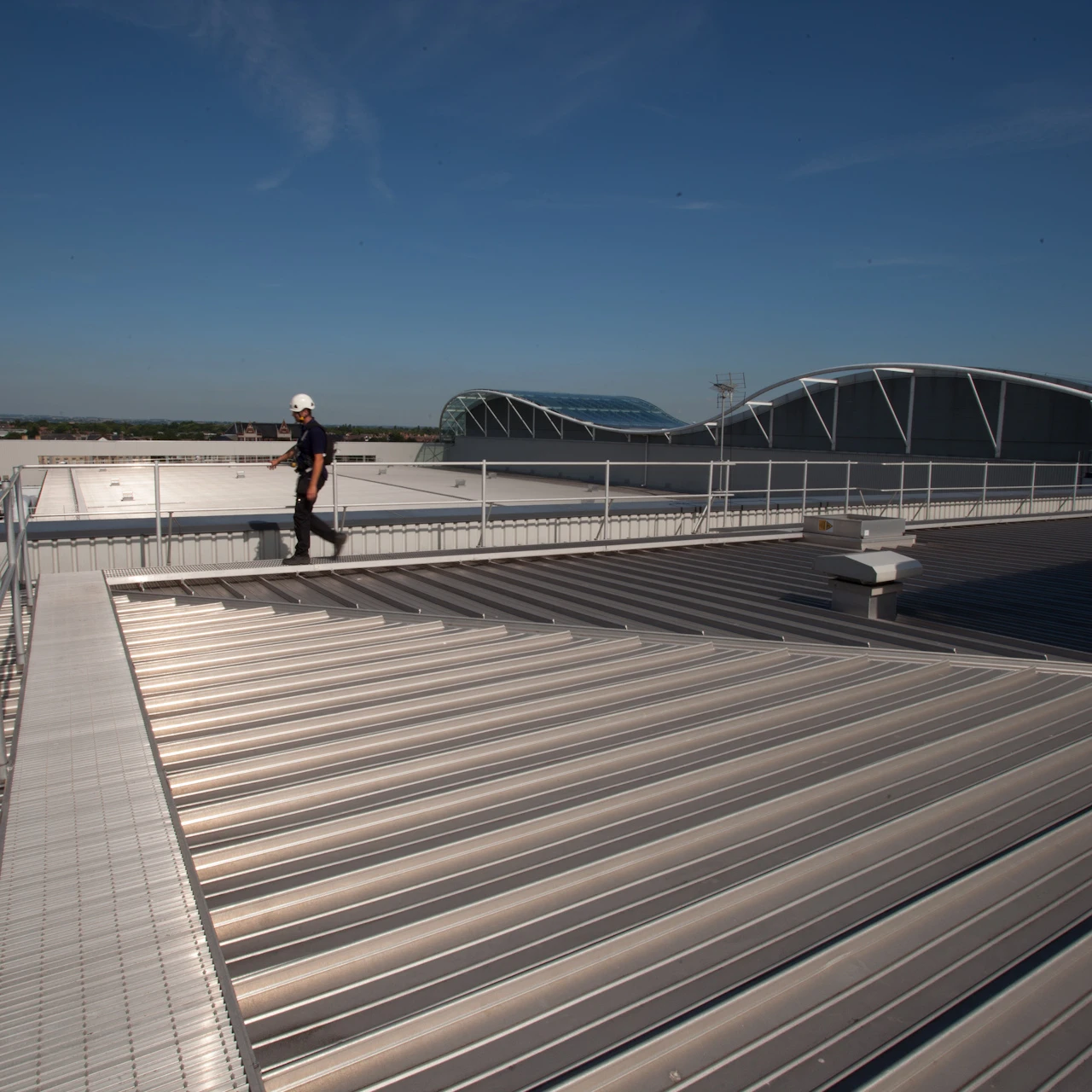

- Knowledge Base
- Blog
- Hierarchy of Risk Management
Hierarchy of Risk Management
It’s a fact that some work activities cannot be completed from ground level and particularly when it comes to maintenance works on roofs, workers need access to locations at height. Work at height doesn’t just refer to work in an extremely high location – it could even involve work taking place underground. Any work in a place where an individual could fall a distance and be liable to personal injury is classed as work at height. Falls from height continue to be the biggest cause of fatal injury in Britain’s workplaces.
According to the Health and Safety Executive (HSE), the number of accidents when working at height can be significantly reduced by considering The Hierarchy of Risk Management. This control system provides guidance to anyone working at height to enable the safest and most sensible approach to work at height. Before an employee carries out a work at height task, they must first assess the risks involved and weigh up factors such as; the height of the task and the duration and condition of the surfaces being worked on.
How the HSE views an approach to height safety is that the hierarchy of safety should first be considered so that employees can then identify the safest option for work:
Eliminate the risk - Where possible, the task should be completed from ground level. In order to achieve this, the project is assessed as to whether it is necessary for operatives to access the roof in the first place. If possible, all plant and maintenance equipment should be placed at ground level and the task completed from here.
Guard the hazard (collective protection) – Should roof access be unavoidable the next option is prevention and to create a safe working environment. Workers must look to use an existing place of work that is safe to carry out the activity. If an alternative safe location is not available, work equipment must be used. This would be in the form of sufficiently high parapet walls or a guardrail enclosing the roof or surrounding the work area.
Protecting the worker (individual protection) – If the risk of a fall cannot be prevented, then sufficient measures must be taken to minimise the distance and/ or consequences of a fall if one were to occur.
This method falls into two subsections:
Fall restraint – Ideally, protecting the worker should take the route of fall restraint which can be in the form of a wire-based system. The principle in this case is to prevent the operative from physically reaching a fall hazard.
Fall arrest – The alternative to fall restraint is a fall arrest system which incorporates methods of load dissipation to cope with the forces imposed, should an operative fall. The principle in this case is to prevent impact with the ground or the next nearest equivalent if a fall were to occur. This method will keep the operative suspended until rescue.
Employers or individuals who control work at height have a duty to assess and consider the safety of those working at height throughout the task duration. A duty holder must make sure that work is correctly planned, supervised and carried out by the most competent individuals. This includes carrying out thorough risk assessments on site, in line with The Hierarchy of Risk Management, and ensuring that everyone involved in the work-at-height activity is competently trained in line with the law.
Employees should also remember that they have legal duties to cooperate with their employer and must take reasonable care of themselves and others around them.
At Eurosafe, we offer a range of training courses that can be provided either at our customers’ premises or at our training centre in Sheffield. Here, we have several indoor roofing rigs that can be used for practical demonstrations and assessments.
Our training sessions also provide an overview of relevant legislation so employees and employers are aware of how to minimise risks and understand how to work safely at height and in line with the law.













